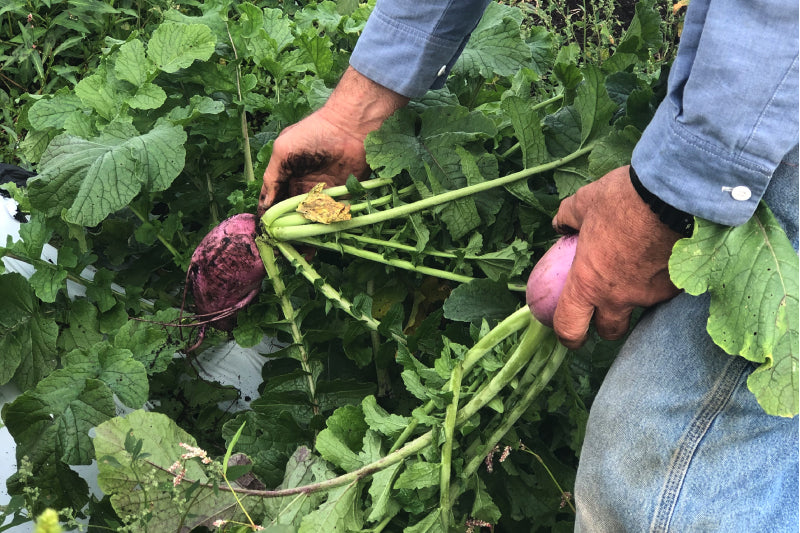


Attention!
Due to the COVID-19 outbreak we are no longer accepting or fulfilling NATIONAL orders for the time being.
If you are looking for New York City Grocery Delivery please click here.



Due to the COVID-19 outbreak we are no longer accepting or fulfilling NATIONAL orders for the time being.
If you are looking for New York City Grocery Delivery please click here.

Plants depend on healthy soil, with the myriad nutrients it provides, to grow into nourishing food for humans and other animals. Conventional farmers use harmful workarounds to replenish nutrients so they can grow more food, faster. These methods degrade the earth’s life-giving soil supply and accelerate climate change.
Regenerative agriculture provides solutions to many of the problems of industrialized ag. And it’s not a new idea. No surprise that the fundamentals of regenerative ag look a lot like the farming practices of indigenous people. While the benefits are abundant, the main objective of this concept is to create healthy soil and remove carbon from the atmosphere.
Here are a few common practices that do just that:
1. Cover Cropping
Cover crops are not grown for consumption. Instead, farmers plant them as a natural way to restore nutrients to the earth so the next planting of food will flourish. Cover crops are typically grasses or legumes that help suppress weed growth, manage soil erosion, increase soil fertility, control disease pests and promote biodiversity.
2. Crop Diversification
Large-scale monoculture, or growing a lot of one type of crop, increases the need for fertilizers and depletes the organic matter of the soil. Diversity of crops makes for more microorganisms in the ground which strengthens plants to resist disease.
3. Animal Integration
Since the beginning of time, livestock and agricultural crops have co-existed in mutually beneficial relationships. Animals eat, digest and excrete, accelerating the cycling of nutrients and carbon to the soils while feeding on pests and weeds that would otherwise disrupt the plants.
4. Composting
Compost is created from the decomposition of materials usually considered waste, including food scraps, animal manures, leaves, straw and more. Made up of rich organic material, the key to soil fertility, compost reduces the need for harmful fertilizers.
5. Reduced/ No-till
Tilling breaks up compacted soil and eliminates weeds; but it also destroys the structure of the soil, making it more vulnerable to erosion. Fewer disruptions make for a longer lasting and more resilient environment in which crops can thrive.
These are just a few of the benefits of regenerative practices and it’s apparent this needs to be agriculture’s future. Achieving this goal motivates our team to continue expanding our network to include farms that share our passion for change in how we grow food.
Since food transparency and education are core to us, we have added new icons to help you learn more about the different benefits of our food. To enjoy more regenerative foods, look for our Beyond Organic icon. There are a few reasons why a product or farm might be labeled Beyond Organic versus Certified USDA Organic. One is money. Many small farms cannot afford the thousands of dollars per year it costs to get certified, even though they practice--or even exceed--the guidelines set by the USDA. The other big reason is that since the USDA NOP has been co-opted by Big Ag, their standards have been severely reduced. The alternative practices of these small farms have not yet been regulated by the organic industry, but they often use regenerative practices which sustain the land and yield the highest quality.
#knowyourfood